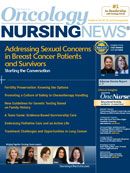Evidence-Based Approaches to Survivorship Care
The number of cancer survivors in the United States is approaching 14 million, but that good news also means more attention must be paid to quality-of-life concerns for these individuals, as well as any long-term after effects of treatment.
Hyman B. Muss, MD
The number of cancer survivors in the United States is approaching 14 million, but that good news also means more attention must be paid to quality-of-life concerns for these individuals, as well as any long-term after effects of treatment. Monitoring breast cancer survivors and assessing their symptoms in the context of a busy survivorship clinic was the focus of two presentations at the recent Miami Breast Cancer Conference (MBCC) by Hyman B. Muss, MD, professor of medicine at the University of North Carolina-Chapel Hill and director of Geriatric Oncology at the Lineberger Comprehensive Cancer Center.
With survivorship care plans now mandated as part of patient-centered accreditation standards developed by the American College of Surgeons Commission on Cancer (CoC), all members of the cancer care team will have a role in managing an already large and increasing number of breast cancer survivors.
Muss said that he follows the ASCO clinical practice guidelines on follow-up care for breast cancer (J Clin Oncol. 2013;31(7):961-965). The guidelines recommend medical history and physical examinations, posttreatment mammography, breast self-examinations, pelvic examinations, coordination of care, and genetic counseling when appropriate.
Once patients complete their therapy regimen, they can be referred back to their internist or primary care physician or internist, but Muss tends to refer them to his institution’s survivor clinic, not only because of convenience and the breast cancer expertise of its care team, but also, he said, because internists and family practitioners may already be overwhelmed by patients with other medical problems and are not as familiar with the long-term effects of endocrine therapies like tamoxifen or aromatase inhibitors (AIs).
When Muss gives talks to internists and family practitioners, he has found that few are comfortable with helping patients to manage AI-related pain, for example. “It’s very difficult to manage pain that’s associated with long-term aromatase inhibitor use.”
He added that people talk about referring to primary care physicians, but that hasn’t been the practice in the United States thus far: “It would be nice if it would happen, but look at the facts. We’re short of internists, we’re short of family practitioners, and to add these patients, with more things to learn and worry about, is that really going to happen? I’m skeptical.”
Muss said he and the survivor clinic team of nurse practitioners and physician assistants can handle most of the complications that arise from cancer treatment. He noted that once a patient has progressed beyond the oncologist’s knowledge, it’s important to refer to the correct specialist— whether that’s the palliative or supportive care specialist, a social worker or counselor, or a neurologist, in the case of neuropathy. “There is a lot we can do, but it’s a team game.”
Follow-up care will depend on the patient’s course of therapy, said Muss. For patients who undergo chemotherapy, most will recover fully and enjoy a good quality of life, anywhere from 6 months to a year after treatment ends. He cited peripheral neuropathy and symptoms associated with premature menopause as particularly challenging. “Those are things to look out for,” he continued, adding that physicians also should not be reluctant to ask personal questions to gain more insight into how the patient is faring after treatment.
“Since you’re the doctor, you know these patients the best. How’s their marriage? How are they dealing with kids? Sexual function? I never asked these questions 30 years ago.” Now, he said, he is not uncomfortable asking them. For women on tamoxifen therapy, in addition to pelvic examinations and Pap smears, “Make sure these patients get their eyes checked,” Muss said. Given that patients take this drug for as long as 10 years, “It’s a like a statin for cholesterol. You need someone paying attention and monitoring it.”
He added that many women taking AIs may have major arthralgia or myalgia that slows them down and can be very uncomfortable, along with vaginal dryness and hot flashes.
In a busy practice, Muss uses a checklist that consists of 20 to 30 side effects and troubling symptoms that a patient can fill out or circle to identify problems. The checklist includes a grading scale to indicate level of severity that helps clinicians to focus their attention during the office visit (Figure). His checklist consists of common toxicity criteria highlighted by the National Cancer Institute (NCI) and is similar to the Common Terminology Criteria for Adverse Events (CTCAE).
Once patients fill out the checklist, Muss said he can quickly scan it, insert it into the medical evaluation form, and document any symptoms appropriately. He said patients sometimes indicate what’s bothering them on the form, rather than being forthcoming and telling the practitioner directly.
He added that many electronic medical records (EMRs) do this already, as well as some apps, and these methods may be preferred by many doctors/nurses/NPs/PAs, especially if they can easily review symptoms over time. The paper form is cheap, fast, can be reviewed quickly, and can be scanned into any EMR. “You don’t want to miss anything, and you don’t want to forget to ask. You let the patient fill out the checklist, and then you focus on what’s on the form,” said Muss. “It serves as a great prompt.”

Nurse Practitioners Weigh in on Data From the San Antonio Breast Cancer Symposium
January 16th 2023Loyda Braithwaite, MSN, RN, AGPCNP-BC, AOCNP; and Jamie Carroll, APRN, CNP, MSN, highlight presentations from the 2022 San Antonio Breast Cancer Symposium that will influence oncology nursing practice.



